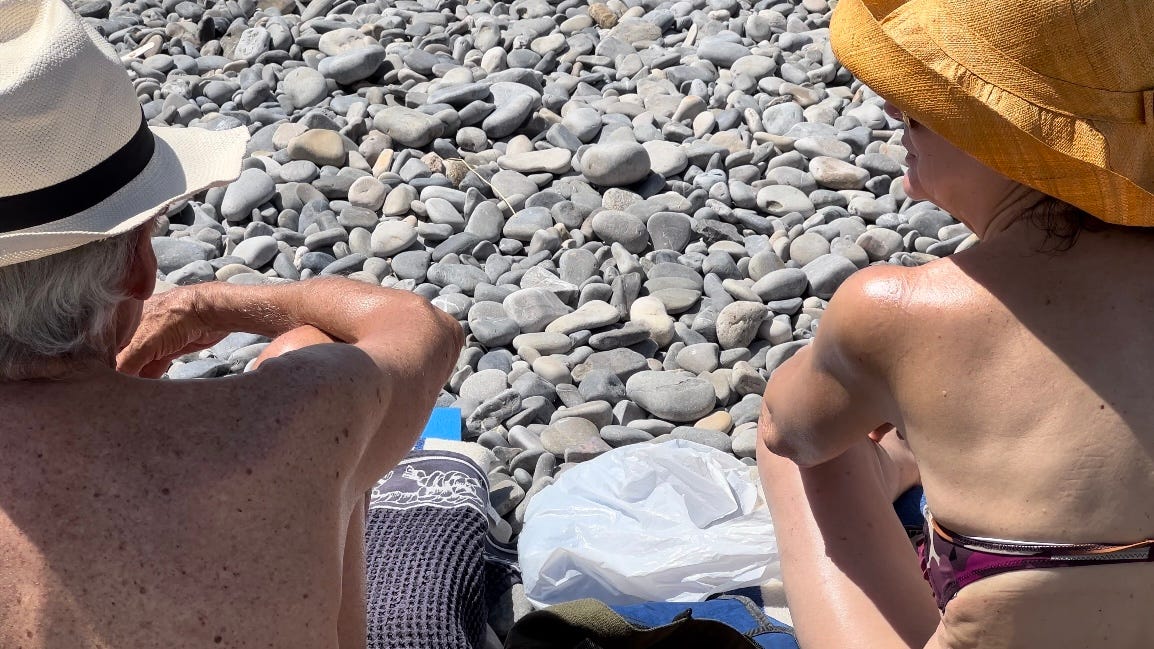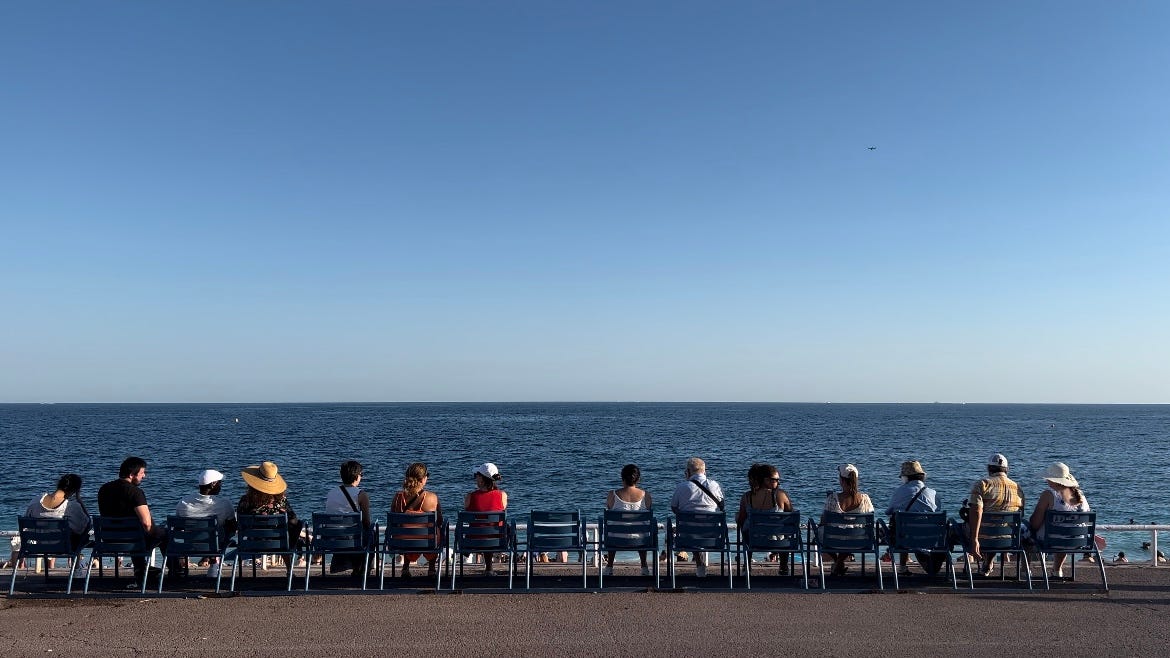#2 On performativity
We perform and we wait for the applause in the form of “pings, likes, and follows”, but who do we really perform for?
As we go through the last days of August, the air almost standing still with the weight of memories and expectations mixing into a preemptive sense of nostalgia, our online selves thrash between the “is”, “was”, and “will be” of the final remnants of Summer. Muscle memory remembers the tinned fish of Lisbon, but an almost inexplicable force draws us to the drying octopus tentacles of the Greek islands. We observe calloused hands as they pull fishing nets from the sea, then overly tan manicured fingers as they flip through the morning newspaper, pausing only to absentmindedly stir a tiny cup of espresso. Liver spots, the signs of time passed, adorn them almost like a medal that we cannot help but marvel at. We consume the essence of their stillness through our lens and our vita also becomes lenta. We tell ourselves that we have never felt the dolce of the farniente quite as much as we do in this moment. We enjoy the most povera of cucinas and that first bite of a seaside peach takes on astronomical proportions as its juice drips down our arm—our 20, 30-year old arm which is simultaneously the arm of our 5-year old self who can best be described by the now almost passé phrase of “no thoughts, head empty”. Yet we are not that 5-year old; we are an adult that sought that peach out from the stall at the mercato (or the marché, or the αγορά, whatever (inter)national iteration of a market our budget has allowed us to access), willingly ignorant to the fact that it is in no way different from a peach we could have bought from the supermarket, because “it just tastes better when it’s bought from a stall outside”. We go back to the simple dwelling we have booked which is nonetheless conspicuously outfitted with a Vitra lamp and Tekla bedding. We snap a film picture of the magazine (almost no pictures, mostly essays) that we managed to read 20 pages of at the beach as it lays on the crisp white sheets, already thinking of the clever caption that shall accompany it on social media when we post it—three weeks from now, to properly show that we do not really care. We pause a little, shake away the thought that the one we’re truly trying to show that to is ourselves, the performance having become so intricate, so perfect that we no longer distinguish it from a genuine interaction with reality.
Admittedly, I am no better. I am no worse, either. I did not eat a seaside peach, but I did eat a seaside tomato—bought from the marché after I had confirmed it was coming from a small-scale production in Vaucluse and not shipped in crates all the way from Spain—making sure to snap a perfectly imperfect picture of it with my disposable camera. I did not read 20, but about a hundred pages, but my magazine was indeed almost no pictures, mostly essays. One of said essays, titled “FOUR DECADES OF DOUBT, OR, NEXT TO A CEMETERY, A LANDFILL, AND A TURNPIKE IN A NEW JERSEY TOWN” by Dr. Christina H. Moon explores the many facets of doubt as it takes centre stage in one’s life, but its second paragraph hits especially hard in relation to the perpetual performance of our online selves.
“We doubt we are loved in this world, so begin our days by checking our phones. We confirm we have friends on Instagram. […] We hope to spark conversation and meaningful interactions, intently watching for the pings, likes, and follows that confirm our existence. […] We don’t want to miss out, we want to find ways to maximise our brand reach.”—Moon, C.H. (2021) FOUR DECADES OF DOUBT, OR, NEXT TO A CEMETERY, A LANDFILL, AND A TURNPIKE IN A NEW JERSEY TOWN. Vestoj, 10, 13-14.
We perform and we wait for the applause in the form of “pings, likes, and follows”, but who do we really perform for? Do we perform for the ones who will absentmindedly double-click our picture—an admittedly beautiful seascape rendered redundant as it drowns not in its own blue waters, but in the chokingly overwhelming myriad of such pictures (and still videos, taken by those at the forefront of the curve) that populate the space that is our second plane of existence? Or do we perform for ourselves, creating another spectator within the spectator that looks inwards, instead of outwards; that views the experience not through the corporeal, but through the skewed documentation of it—a video with lowered contrast shot on 4K 24fps, a grainy disposable camera picture—meticulously curated to abide by the strict laws of online existence. Do we perform to reassure ourselves that we can reshape the trace our experiences-turned-memories to fit whatever image it is we have internalised as the coveted ideal, reshaping our own memories and our own points of view in the process?
Admittedly, I am no better. I am no worse, either. I pause a little as I shovel a forkful of pâtes au pistou into my mouth and try to think of the purest form of pleasure it is able to give me—beyond the charming rusticity of the gingham tablecloth and the lace napkin my plate is laid upon, a picture perfect of an era almost gone by, clinging to modernity by the thread of revered tradition—and I opt for a picture whose destination I decide to stay blissfully unsure of for the time being. It becomes a sort of Schrödinger’s pasta inhabiting the space between the online and the offline, both just a plate of food and a symbol of online (status? belonging?) as long as it is not shared on the world wide web and I ask myself who exists purely offline what both of those option gives me. Then, a plate of barbajuans arrives (or maybe it doesn’t—maybe it only does in the continuity of this online recounting, because it makes for a wonderfully abrupt ending that still retains a touch of reality to it; a sort of Schrödinger’s reality that is both real and fake until an explicit declaration about its authenticity is uttered).







Your writing invokes wonderful concise imagery with details that invoke those times we strive for, when we are focused and centered on being in the present moment.